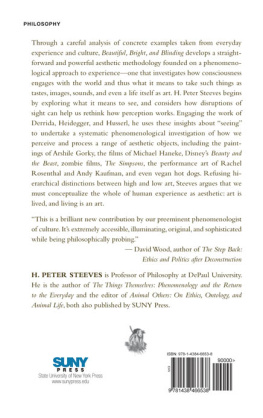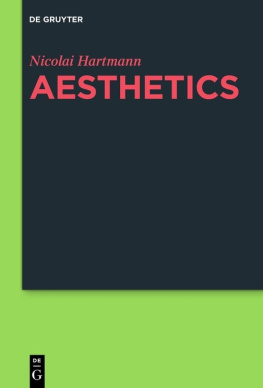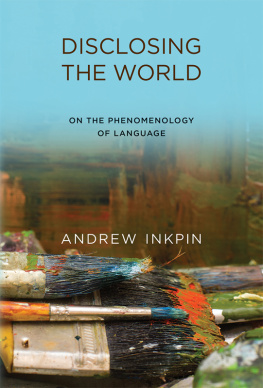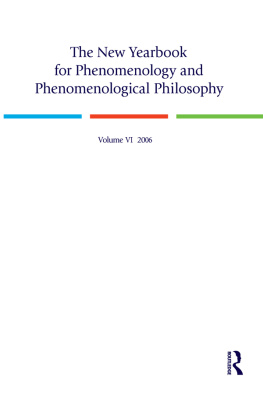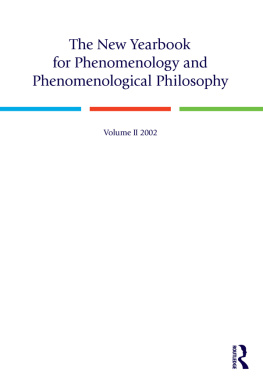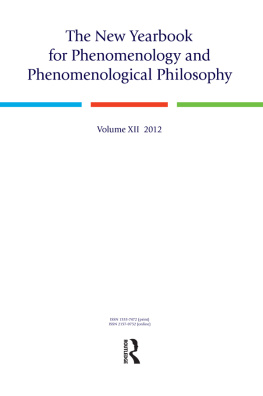Beautiful, Bright, and Blinding
PHENOMENOLOGICAL AESTHETICS
and
THE LIFE OF ART
H. Peter Steeves
Cover and page i illustrations: details from The Human Genome Projection, H. Peter Steeves, 2008.
Photos courtesy of John Sisson Photography, www.sissonphotography.com
Published by
S TATE U NIVERSITY OF N EW Y ORK P RESS , A LBANY
2017 State University of New York
All rights reserved
Printed in the United States of America
No part of this book may be used or reproduced in any manner whatsoever without written permission. No part of this book may be stored in a retrieval system or transmitted in any form or by any means including electronic, electrostatic, magnetic tape, mechanical, photocopying, recording, or otherwise without the prior permission in writing of the publisher.
For information, contact State University of New York Press, Albany, NY
www.sunypress.edu
Production, Laurie Searl
Marketing, Anne M. Valentine
Library of Congress Cataloging-in-Publication Data
Names: Steeves, H. Peter, author.
Title: Beautiful, bright, and blinding : phenomenological aesthetics and the life of art / H. Peter Steeves.
Description: Albany, NY : State University of New York, 2017. | Includes bibliographical references and index.
Identifiers: LCCN 2016047188 (print) | LCCN 2017033601 (ebook) | ISBN 9781438466552 (e-book) | ISBN 9781438466538 (hardcover : alk. paper)
Subjects: LCSH: Aesthetics, Modern. | ArtPhilosophy. | ArtsHistory and criticism. | Phenomenology.
Classification: LCC BH151 (ebook) | LCC BH151 .S74 2017 (print) | DDC 111/.85dc23
LC record available at https://lccn.loc.gov/2016047188
10 9 8 7 6 5 4 3 2 1
For Ursa Minor
Contents
And Say the Zombie Responded?
or , How I Learned to Stop Living and Unlove the Undead
Acknowledgments
Even the Mona Lisa was a team effort. As with any human undertaking, this book is not merely indebted to a community but could not exist in any way without that community. To my family, friends, and colleagues, I extend my most sincere gratitude.
Some chapters, and parts of some chapters, have appeared elsewhere, typically in a much-truncated or altered form. My thanks to Dawne McCance, editor of Mosaic: A Journal for the Interdisciplinary Study of Literature, who published versions of chapters 1 and 8 in her journal as, respectively, Gone, Missing, v. 46, n. 3 (Sept. 2013): 126; and Rachel Rosenthal Is an Animal, v. 39, n. 4 (Dec. 2006): 126. Popular Culture Review has published abridged versions of chapters 3 through 6 in the following forms: The Concept of Conceptual Art: You Are Here and Not Here, v. 24, n. 1 (Winter 2013): 524; The Doubling of Death: Human, Animal, the Real, and the Irreal in the Films of Michael Haneke, v. 22, n. 2 (Summer 2011): 1526; Yep, Gastons Gay: Disney and the Beauty of Beastly Love, v. 16, n. 1, (Winter 2005): 12545; and And Say the Zombie Responded? Or, How I Learned to Stop Living and Unlove the Undead, v. 23, n. 2 (Summer 2012): 526. Sections of chapter 7 appeared in a different form online in The Man Who Mistook His Meal for a Hotdog, Between the Species , Issue IX, October 2009: , part of which was written for Why So Serious? A Conference on Philosophy and Comedy that Russell Ford and I organized at DePaul University in 2012, went on to be featured online in Angelaki: Journal of the Theoretical Humanities (v. 21, n. 3 [July 2016]). My thanks to Russ, the guest editor of Angelaki s special issue that was our conference proceedings, as well as Helen Gough and the staff at Taylor and Francis.
My special thanks to Matthew Girson for allowing me not only to reprint images of so many of his oil paintings here, but for having created those paintings in the first place. Ive been commenting on his workriding the coattails of a real artistfor more than a dozen years now, and I look forward to decades more of the same garment travels. I am grateful, as well, to Felicia Campbell for many reasons, including being the model of a generous host and friend. Felicia created and has run the Far West Popular Culture Association conference for thirty yearsa conference where brief, twenty-minute bits of some of these chapters were presented. Shes amazing for a thousand reasons. I am grateful to Hazel Antaramian Hofman and the Fresno Armenian Art Museum for inviting me to present a lecture on the artwork of Arshile Gorky that became the skeleton of that were taken by Monika Lozinska and John Sissonto whom I am also grateful for lending their artistic photographic talents. Jack Rutberg of Jack Rutberg Fine Arts, Inc., in Los Angeles was kind and generous with his time in locating the owners of the two Gorky images for me; I am very grateful for his help. Patrick Whistler and Bruce McDonald graciously provided the images from Pontypool ; Jordan French and Jay Ives at BeeHex were so kind as to provide an image of their 3D pizza printing machine; and Claudia Pollak at WEGA-Filmproduktionsges.m.b.H was wonderful to work with in procuring the images from Michael Hanekes films. My thanks as well to DePaul University for providing me with a Faculty Research and Development Grant from the College of Liberal Arts and Social Sciences in summer 2014 to support work on this book. And very special thanks to DePauls Father Edward Udovic (and the Vincentian Endowment Fund) for offering the financial support that made it possible to include the Arshile Gorky images in this book and to publish all of the books images in color. It would be a gray world without Fr. Udovics generosity.
At SUNY Press, my most sincere thanks to James Peltz, Andrew Kenyon, Daniel Otis, Anne Valentine, and Laurie Searl. I am truly grateful for their guidance and support seeing this book through to the end. It has been wonderful to work with Laurie once again on the production and design of a book, and I wish her the very best in her (semi-)retirement.
Rachel Rosenthal, the focus of is about, and is dedicated to, Andy. Today, I am lucky to call his sister, Carol Kaufman Kerman, my friend. My thanks to Carol, Michael, Pru, their entire familyand the spirit of Andy that is always, I hope, operative in my life.
To all of the people who have spoken with me over the years about this work and have provided inspiration of different sorts, my sincere thanks (and my apologies to all who are left off this lista function of my slipping mind and not a lack of gratitude): Dennis Rohatyn, Bill Martin, Michael Naas, Anna Vaughn Clissold, David Wood, James Hart, Charles Klingler, Nicole Anderson, Bill and Charlotte Nickell, Robert Maldonado, Steve Ingeman, and especially Marins Fornerino. Finally, my thanks to Maryse Meijer and Danielle Meijer, who helped coauthor a conference talk on Michael Haneke that led me to . Maryse is one of the finest fiction writers of her generation: if youre looking for good art that will utterly blind you with truth and beauty (and maybe a dull butter knife when your back is turned), stop reading these acknowledgments and go buy her books immediately. And Danielleshe is my partner, sounding board, coconspirator, life coach, encourager, collaborator, wife, band mate, anarchic comrade in arms, fleshed-out horizon, love, and ultimate telos. Without her, I quite simply would not be here.

